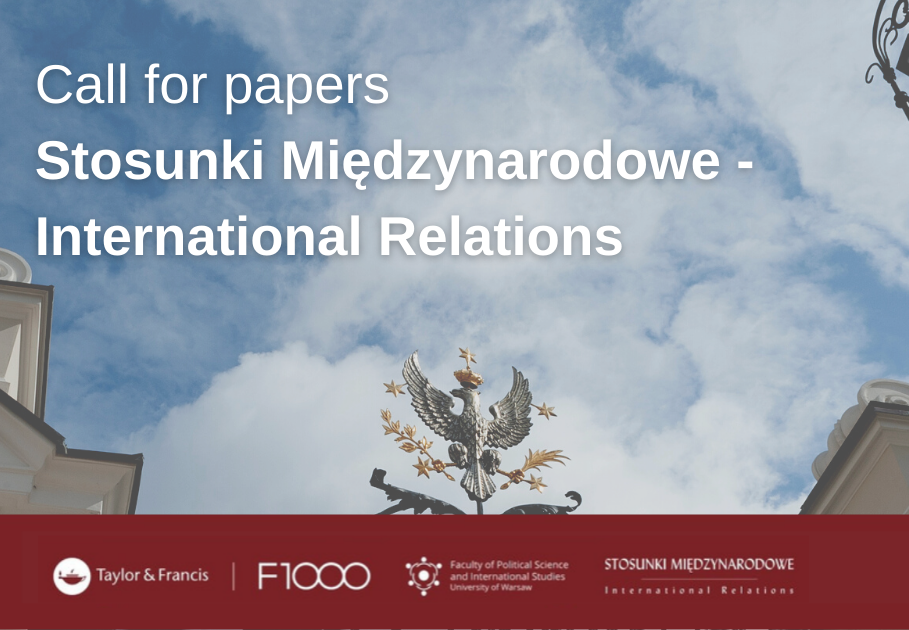O czasopiśmie
Cele i zakres czasopisma
Zasady Etyki
Polityka Prywatności (RODO)
Zespół Redakcyjny i Rada Redakcji
Kontakt
Bieżący numer
Archiwum
Dla Autorów
Call for Papers
Ogólne wytyczne dla Autorów
Struktura tekstów
Wymogi edytorskie
Procedura recenzowania
Zasady recenzowania
Dla Recenzentów
Procedura recenzowania
Zasady recenzowania
Ogólne wytyczne dla Recenzentów
Zasady publikowania/
Kodeks etyczny
Kontakt
ARTYKUŁ NAUKOWY
The Role of the European Union
in Conflict Resolution in Nepal
1
Shinawatra University
Data publikacji: 31-03-2015
Stosunki Międzynarodowe – International Relations 2015;51(1):83-91
SŁOWA KLUCZOWE
international relations of the European Unioncooperation between the European Union and NepalEuropean Commission’s assistance to NepalEuropean UnionNepal
STRESZCZENIE
At the beginning of the 21st century, the European Union (EU) has ambitions to play
a more important role in international relations. In recent years, it has developed
relations with partners across the globe. The EU put stress not only on political and
economic cooperation, but it wants to promote some of the values that it considers
important. Among these values are democracy, social welfare, human rights and
liberalism. One of the key aspects of European foreign policy (EFP) contributed in
manifold ways to peace support operations. As regards the European Commission
(EC), it has a strong external relations acquis in projecting peace abroad, notably
in the form of preventive diplomacy and long-term civilian peacebuilding.2
In this context, European Commission’s assistance to Nepal dates back to
1977. In June 1996, the EC–Nepal Framework Co-operation Agreement came
into force, outlining the general conditions for providing EC technical assistance
and co-operation. The principal objectives of this Agreement are to enhance
and develop the various aspects of co-operation between the parties. The EC’s
assistance to Nepal during the period 2007–2013 has an estimated budget of EUR
120 million and will target the following three areas: education (with human
rights, conflict prevention and good governance as cross-cutting issues); stability
and peacebuilding; trade facilitation and economic capacity building.3
To further
consolidate its effort, on 8 July 2011 the European Union agreed to provide
a grant of EUR 22 million for the implementation of the Support for Stability
and Peace Building program. Thus peacebuilding & conflict resolution is one of
the key priority areas of the assistance from the European Commission to Nepal.
This paper outlines the European Union’s support to Nepal’s conflict resolution
initiatives and its implications on the conflict resolution process of Nepal.
Udostępnij
ARTYKUŁ POWIĄZANY
Przetwarzamy dane osobowe zbierane podczas odwiedzania serwisu. Realizacja funkcji pozyskiwania informacji o użytkownikach i ich zachowaniu odbywa się poprzez dobrowolnie wprowadzone w formularzach informacje oraz zapisywanie w urządzeniach końcowych plików cookies (tzw. ciasteczka). Dane, w tym pliki cookies, wykorzystywane są w celu realizacji usług, zapewnienia wygodnego korzystania ze strony oraz w celu monitorowania ruchu zgodnie z Polityką prywatności. Dane są także zbierane i przetwarzane przez narzędzie Google Analytics (więcej).
Możesz zmienić ustawienia cookies w swojej przeglądarce. Ograniczenie stosowania plików cookies w konfiguracji przeglądarki może wpłynąć na niektóre funkcjonalności dostępne na stronie.
Możesz zmienić ustawienia cookies w swojej przeglądarce. Ograniczenie stosowania plików cookies w konfiguracji przeglądarki może wpłynąć na niektóre funkcjonalności dostępne na stronie.



